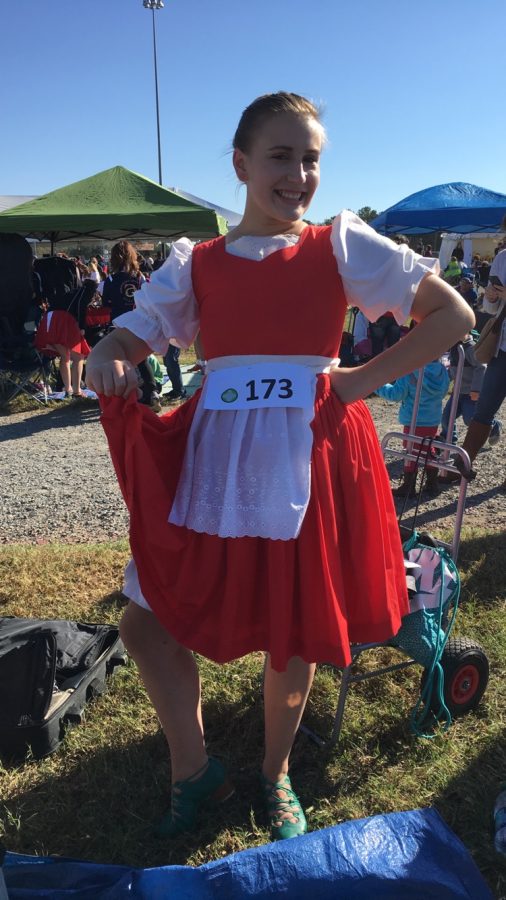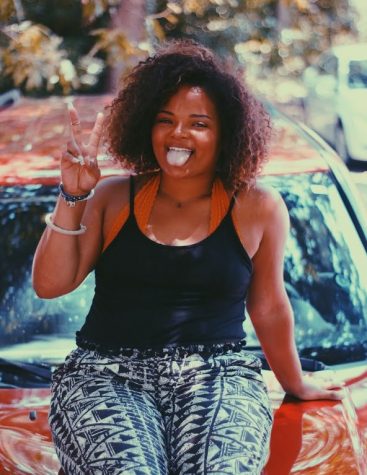Culture Collaboration
Waverly Noble the Scottish Highland Dancer
Posing for a quick picture before changing into a different costume for her next dance, Waverly Noble loves her Jig dress. Waverly placed fourth for her Earl of Erroll dance at her competition in Richmond, Virginia.
November 5, 2016
Highland dancer of eleven years, Waverly Noble looks forward to becoming a senior premier dancer this December. Waverly began Highland dance at the age of four, not only because of her parents encouragement, but also because of personal interest.
Waverly’s father is from Scotland, where Highland dance originates. Her father lived there until he was twenty-five years old. Waverly has visited Scotland herself three times. Her first time being in the womb and again at the ages of one and seven.
Currently, Waverly dances at Raleigh School of Scottish Dance. This is Raleigh’s only Scottish dance studio. Raleigh School of Scottish Dance was opened by her coach, Erin Bartow. Erin recently stopped dancing herself. She was a national champion, ranking first runner-up in the United States Inter Regional Highland Dance Championship twice.
Waverly is very fond of Erin and even helps her teach her younger classes. She has been assisting Erin teach classes since the studio first opened when she was twelve years old. This summer, Waverly plans to get certified to teach her own classes since she will finally be the required age of sixteen.
When asked what her favorite dance to perform is Waverly responded, “That’s a tough choice,” but finally admits that Blue Bonnets is her favorite dance. This is a National Dance rather than a Highland Dance. The National Dances are more modern and were developed so women could participate. Waverly says that she prefers National Dances because “they are much more graceful than Highland. I like to smile and have a lot of stage presence when I dance.”
The Sword Dance is Waverly’s least favorite dance. When doing the Sword Dance, the dancers have to dance around two intersecting swords making an “X”. The dancers must not touch the sword or they will be disqualified. Waverly describes it as a very hard dance that is very hard on your feet. “It hurts, not a fan,” she says. This dance is often dumbed down and taught to younger kids.
Waverly attends about five to six competitions a year with her dance studio. When it is not competition season, they do performances at different irish pubs, festivals, and the St. Patrick’s day parade. Waverly’s most recent competition was in Richmond, Virginia. This event had not only Scottish Highland dancing but also Irish dancing and heavy athletics. Scottish heavy athletics began as a result of the Highland warriors wanting to stay in shape between battles. To do so they began competing amongst themselves using everyday things such as tree trunks, hammers, and stones.
Scottish Highland dancing celebrates the Scottish spirit. The dancers perform to traditional Scottish music played by an accompanying bagpiper. The dances are made up of different parts, called steps, and there are usually four or six steps to a dance. Scottish Highland Dancing is a fun way to stay in shape and meet new people; it is open to everyone.












